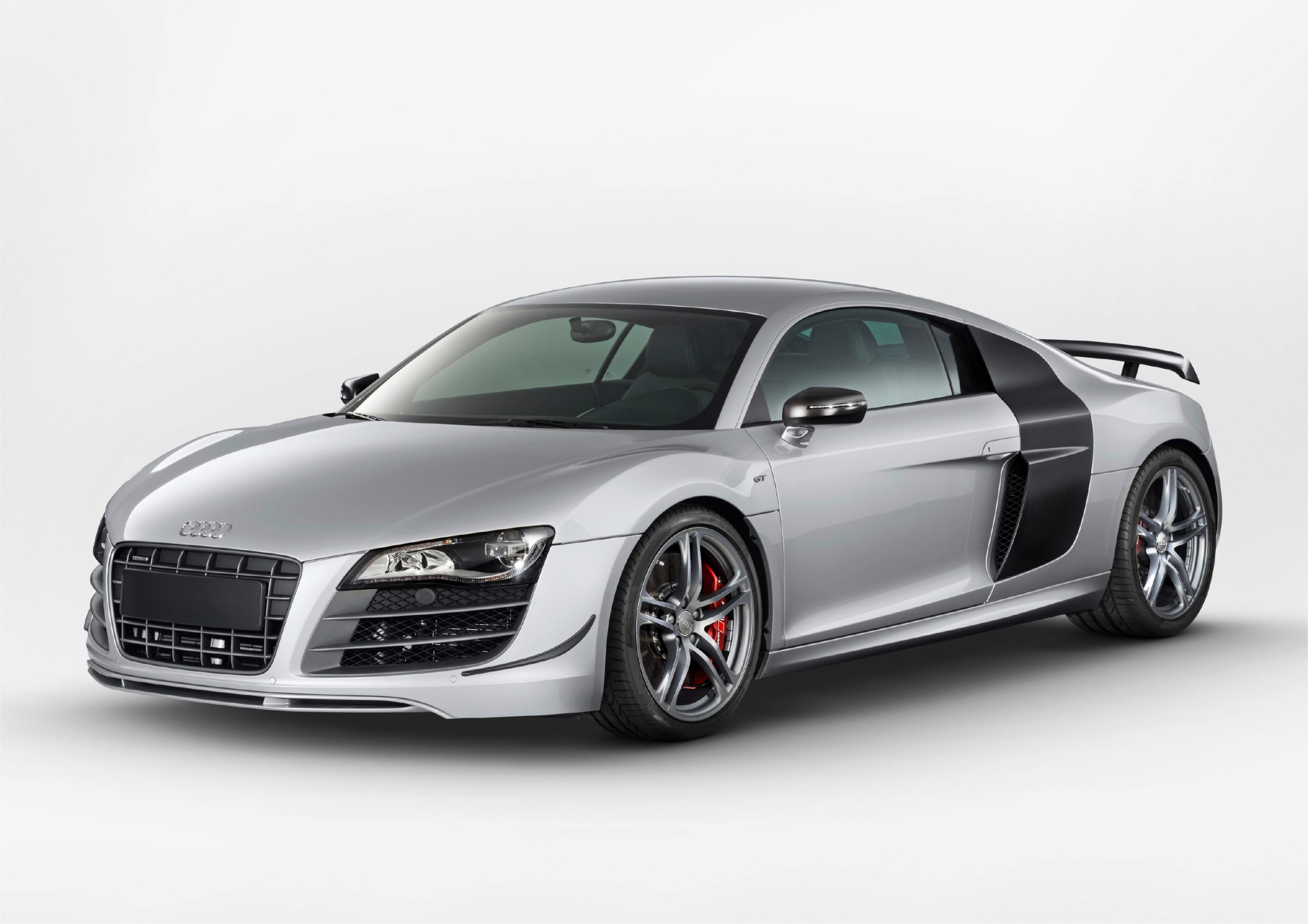The Audi R8 (internal type designation 42) is the first model generation of Audi’s mid-engine R8 sports car, which was presented to the public in September 2006. The name is based on the successful Le Mans racing prototype Audi R8. To save weight, the car’s body is made entirely of aluminum. A total of 26,037 R8s were produced from fall 2006 to the end of 2014,[1] of which 5626 were newly registered in Germany according to the Federal Motor Transport Authority. The successor Audi R8 4S appeared in 2015.
The Audi R8 (internal type designation 42) is the first model generation of Audi’s mid-engine R8 sports car, which was presented to the public in September 2006. The name is based on the successful Le Mans racing prototype Audi R8. To save weight, the car’s body is made entirely of aluminum. A total of 26,037 R8s were produced from fall 2006 to the end of 2014,[1] of which 5626 were newly registered in Germany according to the Federal Motor Transport Authority. The successor Audi R8 4S appeared in 2015.
There are hardly any technical similarities between the eponymous Audi prototype, with which Audi was a five-time Le Mans winner, and the production car. The Audi R8 is the first mid-engine sports car produced by Audi in series for road use. With a 270 kg skeleton body made of aluminum (Audi Space Frame) and a frame made of aluminum and magnesium, in conjunction with the installation position of the engine, a weight distribution of 44 to 56 percent between the front and rear axles is to be achieved.
The mid-mounted engine moves the passenger cell well forward. The wheelbase is comparatively long at 2650 mm and brings short body overhangs.
The V10 gasoline direct injection (FSI) engine familiar from the Audi S6 C6 has been available in modified form in the R8 since April 2009. The high-revving engine with 5.2 liters displacement achieves a maximum output of 386 kW (525 hp) at 8000 rpm and maximum torque of 530 Nm at 6500 rpm. The Audi R8 V10 accelerates from 0 to 100 km/h (62.14 mph) in 3.9 seconds and reaches a top speed of 316 km/h (4.1 s or 313 km/h for the Spyder). The power-to-weight ratio is 4.4 kg/kW (3.2 kg/hp) (Spyder 4.7 kg/kW and 3.4 kg/hp respectively).
In summer 2010, the V10 engine appeared in a performance-enhanced variant in the limited-edition R8 GT. Here, the 5.2-liter unit produces a maximum of 412 kW (560 hp) at 8000 rpm and maximum torque of 540 Nm at 6500 rpm. The GT model accelerates from 0 to 100 km/h in 3.6 s (top speed: 320 km/h). Thanks to various weight reductions on this model, the power-to-weight ratio is 3.9 kg/kW (2.9 kg/hp).
Like the R8 race car, the car has dry sump lubrication with a separate oil reservoir, which shifts the engine’s center of gravity further down and ensures optimum lubrication even under extreme lateral acceleration. The design of the R8 is the series translation of the design language of the Le Mans quattro design study and the Audi RSQ from the film I, Robot, all of which were developed from the same formal concept (lateral shoulder line continued into circumferential band). The designer of all three sister cars is Julian Hönig. Visually, the two available models differ from each other. For example, the V10 variant has larger single exhaust tailpipes on the left and right compared with the V8 variant (until the model update, the V8 had two smaller tailpipes each on the left and right), a modified radiator grille with horizontal and vertical chrome struts, wider flared “sideblades” (vertical air vents on the C-pillar), black-painted inserts in the rear bumper, darkened taillights and a V10 logo on the front fenders and in the instrument cluster.
The design of the R8 is the series translation of the design language of the Le Mans quattro design study and the Audi RSQ from the film I, Robot, all of which were developed from the same formal concept (lateral shoulder line continued into circumferential band). The designer of all three sister cars is Julian Hönig. Visually, the two available models differ from each other. For example, the V10 variant has larger single exhaust tailpipes on the left and right compared with the V8 variant (until the model update, the V8 had two smaller tailpipes each on the left and right), a modified radiator grille with horizontal and vertical chrome struts, wider flared “sideblades” (vertical air vents on the C-pillar), black-painted inserts in the rear bumper, darkened taillights and a V10 logo on the front fenders and in the instrument cluster.



